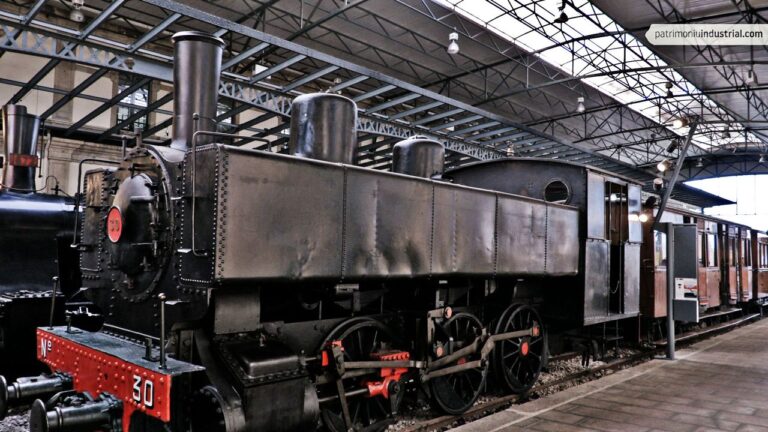Transport

522841475
SIA Rail Ambulance

522718628
SIA 3 Locomotive

363107492
Pontones Mining Group

527403727
SIA 1 Locomotive

363108633
Santa Bárbara Mine

343871690
Railway Museum
The lack of imported fuel during the World War I had numerous consequences for the Asturian mining industry, which affected its railways directly. One of these was the setting up of new mining fields, such as the mines owned by Sociedad Industrial Asturiana "Santa Bárbara" (SIA) in the council of Aller. These were distributed between the Negro river valley and the middle course of the river Aller.
In order to facilitate the disposal of its coal, the company opted for the easiest solution, which was to lay a tramway along the road linking the Santa Ana and Los Pontones mines with the Oyanco coal washing plant. From there, it descended to the Norte de Santullano station, giving access on its route to the agglomerate factory that was set up in Figaredo. It not only provided a mining service, but also had passenger trains for public use. A 750 mm gauge was chosen to increase its transport capacity.
The service was operated by several American locomotives, built by Vulcan Iron Works. The number 1 was acquired in 1916 and was originally used for towing passenger trains. For this purpose, it came from the factory with a metal sheet mudflap that covered its wheels to prevent accidents when passing on public roads. Other notable features of this engine were its water tank and the bell that warned of its arrival. These elements were lost over the years.
In the mid-1930s, the SIA tramway was mostly closed down after the enlargement of the Basque Asturian Railway from Ujo to Collanzo. At the same time, passenger transport was suspended. Only the railway branches connecting the mines with the washing plant remained in service and the number 1 ran along them until it was definitively closed down by HUNOSA in 1971.
At that time, it was transferred to the Sovilla washing plant as a monument. It remained there until it was rescued and restored by the Asturias Railway Museum. Its peculiar characteristics and its origin make it a piece of great heritage value.









Recent Comments